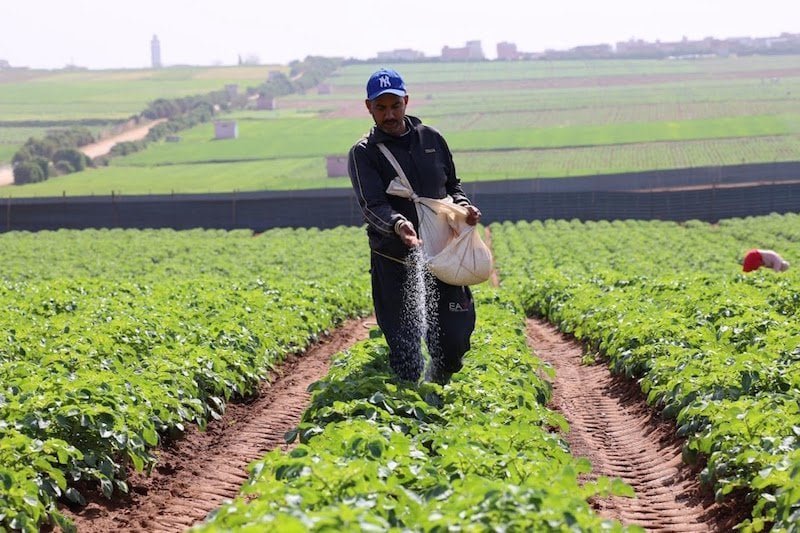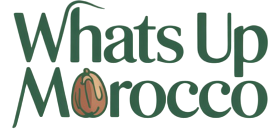
Imagine standing in the vibrant souks of Marrakech, surrounded by the scent of ripe oranges and the sight of glistening olives. Morocco’s agricultural bounty isn’t just a feast for the senses—it’s a powerhouse in the global market. From juicy tomatoes to sweet blueberries, Morocco’s fields are feeding the world, and the numbers tell a fascinating story. In this deep dive, we’ll explore the latest Moroccan agricultural export statistics, uncover the forces driving this sector, and share insights into its challenges and opportunities. Whether you’re a farmer, a foodie, or just curious about global trade, this journey through Morocco’s agricultural landscape will captivate and inform.
The Heart of Morocco’s Economy: Agriculture’s Vital Role
Agriculture isn’t just a job in Morocco—it’s a way of life. Contributing around 12–15% to the nation’s GDP and employing nearly 45% of its workforce, the sector is a cornerstone of the economy. Picture small family farms in the Atlas Mountains alongside modern, irrigated estates near Agadir, all working together to produce a staggering variety of crops. In 2022, Morocco’s agricultural exports hit $8.2 billion, making it one of the fastest-growing agricultural exporters globally, according to posts on X. But what makes this North African nation such a standout in the global market?
Morocco’s unique geography—spanning Mediterranean coasts, fertile plains, and arid deserts—creates a perfect environment for diverse crops. The country’s 30 million hectares of agricultural land, with 7 million arable, support everything from cereals to citrus fruits. Yet, it’s the export-oriented, high-value products like tomatoes, berries, and olive oil that steal the show. In 2023, Morocco ranked as the world’s fourth-largest exporter of tomatoes, earning over $1 billion, per Statista. This success stems from strategic government plans like the Green Morocco Plan and its successor, Generation Green, which prioritize modernization and sustainability.
Top Agricultural Exports: What’s Leaving Morocco’s Shores?
Morocco’s export portfolio reads like a Mediterranean menu. Let’s break down the heavy hitters, backed by the latest data:
- Tomatoes: In 2022, Morocco exported over $1 billion worth of tomatoes, making it the world’s fourth-largest supplier. The European Union, particularly Spain and France, gobbles up these juicy reds, thanks to Morocco’s proximity and favorable trade agreements like the U.S.-Morocco Free Trade Agreement.
- Berries: Blueberries, raspberries, and strawberries are Morocco’s rising stars. Exports nearly quadrupled from 2016 to 2021, reaching $750 million in 2023, per AGBI. The berry boom is fueled by partnerships with companies like Driscoll’s, which recently invested in a processing plant in Larache.
- Citrus Fruits: Oranges, mandarins, and lemons brought in $451 million in 2022. A recent X post noted a rebound in lemon exports for 2024/2025, with 6,100 tons shipped due to strong harvests.
- Olives and Olive Oil: Morocco’s olive groves produce high-quality oil and table olives, with exports valued at $386 million in 2021, according to FAO.
- Seafood: Sardines and other fish exports hit $690 million in 2019, driven by the rich Canary Current off Morocco’s coast.
These numbers highlight Morocco’s knack for producing high-value, consumer-oriented products, unlike its imports, which lean toward bulk commodities like wheat and corn.
A Tale of Two Markets: Morocco’s Trade Partners
Morocco’s agricultural exports don’t travel far—geographically or figuratively. The European Union is the top destination, snapping up 60% of Morocco’s agricultural goods, thanks to proximity and trade agreements. Spain, France, Italy, and Turkey are major buyers, with the U.S. also a key market for sugars and confectionery. In 2023, Morocco exported $610 million worth of agricultural products to the U.S., making it the second-largest U.S. agricultural market in Africa, per the USDA Foreign Agricultural Service.
But it’s not just about Europe and the U.S. Morocco’s strategic location makes it a gateway to African markets, bolstered by the African Continental Free Trade Area (AfCFTA). Yet, challenges like limited cold chain infrastructure outside Morocco’s borders can hinder re-exports to other African nations. Brazil and Argentina also compete fiercely, with Brazil overtaking the U.S. as Morocco’s second-largest supplier in recent years.
### Morocco’s Agricultural Export Highlights (2022–2023)
| Product | Export Value (USD) | Top Destinations | Growth Trend (2016–2023) |
|---|---|---|---|
| Tomatoes | $1.02 billion | Spain, France, Italy | +10% annually |
| Berries | $750 million | EU, U.S., Middle East | +300% (2016–2021) |
| Citrus Fruits | $451 million | EU, U.S., Russia | +5% annually |
| Olives/Olive Oil | $386 million | EU, U.S. | Stable |
| Seafood (Sardines) | $690 million (2019) | EU, Japan | +8% annually |
Source: Statista, USDA, FAO
This table paints a clear picture: Morocco’s export growth is explosive in some areas (berries!) but steady in traditional staples like olives and citrus.
The Green Morocco Plan: A Game-Changer
Let’s rewind to 2008, when Morocco launched the Green Morocco Plan (Plan Maroc Vert). This ambitious strategy aimed to double agricultural GDP by 2020, and it largely succeeded. By investing in irrigation, modern farming techniques, and export-oriented crops, Morocco transformed its agricultural sector. The follow-up, Generation Green (2020–2030), takes it further, targeting 350,000–400,000 new agricultural jobs and mobilizing 1 million hectares of collective land for young entrepreneurs.
I remember visiting a small farm near Meknes in 2019, where a farmer proudly showed me his drip irrigation system, funded by government subsidies. “Before this, we lost half our crop to drought,” he said. “Now, we export strawberries to Europe.” Such stories are common, as precision irrigation and partnerships with global firms like Driscoll’s have boosted yields and quality.
Challenges on the Horizon
Despite its successes, Morocco’s agricultural export sector faces headwinds. Droughts, a recurring nightmare, hit hard in 2024, reducing wheat production to below the 10-year average, per the USDA. Water scarcity is a growing concern, with critics arguing that export-focused agriculture consumes too much of this precious resource. In 2023, food inflation soared to 20%, prompting the government to temporarily halt tomato exports and scrap VAT on agricultural products.
Small farmers also struggle. While large, modern farms thrive, traditional farmers often lack access to fertilizers, pesticides, and mechanization. Land title issues and rising land prices further complicate modernization efforts. Then there’s global competition—Brazil and the EU are nipping at Morocco’s heels, especially in grains and dairy.
Opportunities for Growth
Yet, where there are challenges, there are opportunities. Morocco’s focus on high-value crops like berries and avocados is paying off. The country’s blueberry exports alone jumped from $71 million to $300 million between 2016 and 2021. Trials in the Atlas Mountains aim to make blueberry production year-round, potentially revolutionizing the sector.
Morocco’s investment in infrastructure—ports, roads, and railways—supports its export ambitions. The government’s push for digital transformation, as noted by trade.gov, could streamline supply chains and boost efficiency. Plus, Morocco’s role as a re-export hub for Africa offers untapped potential, provided cold chain logistics improve.
A Personal Reflection: The Human Side of the Numbers
Last year, I spoke with a Moroccan exporter at a trade fair in Casablanca. He described the pride of seeing his family’s oranges on supermarket shelves in Paris. “It’s not just about money,” he said. “It’s about showing the world what Morocco can do.” This sentiment underscores the cultural and economic significance of agriculture. For many Moroccans, it’s a legacy, a connection to the land, and a path to global recognition.
But the human cost can’t be ignored. Reports from organizations like Solidary Hands have documented labor issues, including low wages and poor working conditions on some farms. The government’s push for modernization must balance profitability with fair treatment for the 45% of Moroccans who depend on agriculture for their livelihood.
Expert Insights: What’s Next for Morocco?
Agricultural economist Dr. Amina El Hajji, based in Rabat, shared her perspective: “Morocco’s strength lies in its adaptability. The shift to berries and precision agriculture shows foresight, but water management is critical. Without sustainable practices, growth could stall.” She recommends investing in drought-resistant crops and expanding organic farming, which reached 18,500 hectares in 2022.
On the trade front, Morocco’s free trade agreements, particularly with the U.S. and EU, give it a competitive edge. However, experts warn that over-reliance on Europe could be risky. Diversifying markets—perhaps to Asia or the Middle East—could stabilize revenue streams.
Actionable Advice for Stakeholders
Whether you’re a farmer, exporter, or policymaker, here’s how to leverage Morocco’s agricultural export boom:
- For Farmers: Invest in drip irrigation and explore high-value crops like berries. Partner with cooperatives to access export markets.
- For Exporters: Focus on branding Moroccan products as sustainable and high-quality. Explore emerging markets in Africa and Asia.
- For Policymakers: Prioritize water conservation and support small farmers with subsidies and training. Strengthen cold chain infrastructure for African re-exports.
- For Investors: Look into agribusiness ventures, especially in processing and logistics, to capitalize on Morocco’s growing export capacity.
FAQ: Your Questions About Moroccan Agricultural Exports Answered
Q: What are Morocco’s top agricultural exports?
A: Tomatoes lead the pack, with over $1 billion in export value in 2022, followed by berries ($750 million), citrus fruits ($451 million), olives/olive oil ($386 million), and seafood ($690 million in 2019).
Q: Why does Morocco import so much wheat if it’s a major agricultural exporter?
A: Morocco produces two-thirds of its grain needs but relies on imports for the rest, especially during drought years. In 2022, wheat imports reached $2.5 billion, mainly from the EU and U.S., due to variable rainfall and limited arable land.
Q: How does Morocco compete with global agricultural giants?
A: Strategic trade agreements, proximity to Europe, and investment in modern farming techniques give Morocco an edge. Its focus on high-value crops like berries and tomatoes also helps it stand out.
Q: What role does the government play in agricultural exports?
A: Through plans like Green Morocco and Generation Green, the government subsidizes irrigation, promotes high-value crops, and supports young farmers with land and training.
Q: Are there environmental concerns with Morocco’s export focus?
A: Yes, water scarcity is a major issue. Export crops like tomatoes and berries require significant water, prompting calls for sustainable practices like drip irrigation and drought-resistant varieties.
Q: How can small farmers benefit from the export boom?
A: Joining cooperatives, accessing government subsidies, and adopting modern techniques like precision irrigation can help small farmers tap into export markets.
Conclusion: Morocco’s Agricultural Future
Morocco’s agricultural export story is one of resilience, innovation, and ambition. From the sun-drenched fields of Agadir to the bustling ports of Casablanca, the nation has carved out a niche as a global supplier of high-quality produce. The numbers—$8.2 billion in exports, fourth-largest tomato exporter, 300% growth in berry exports—tell a tale of success, but the journey isn’t without hurdles. Droughts, water scarcity, and labor issues demand attention, yet Morocco’s strategic vision and adaptability offer hope.
For readers, this is more than a collection of statistics. It’s a call to appreciate the farmers who rise before dawn, the exporters who navigate global markets, and the policymakers balancing growth with sustainability. If you’re inspired, consider exploring Moroccan produce at your local market or digging into resources like the World Bank’s agricultural reports to learn more. Morocco’s fields are sowing seeds of opportunity—will you plant one too?
